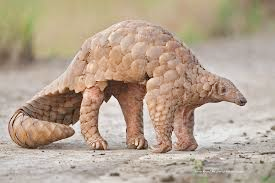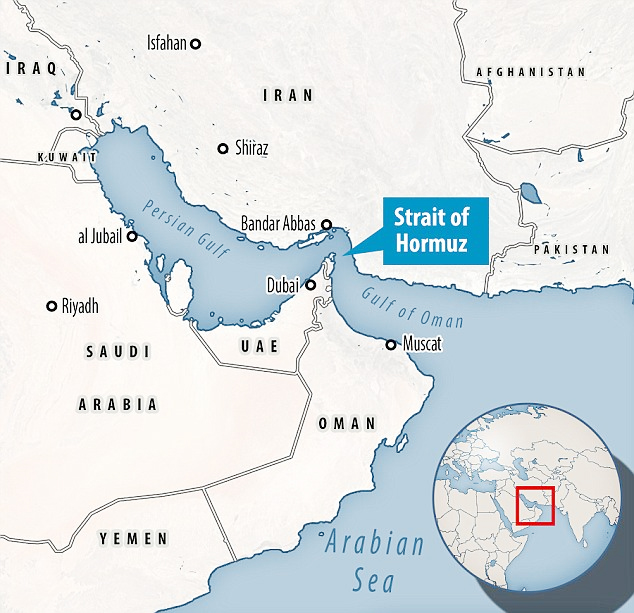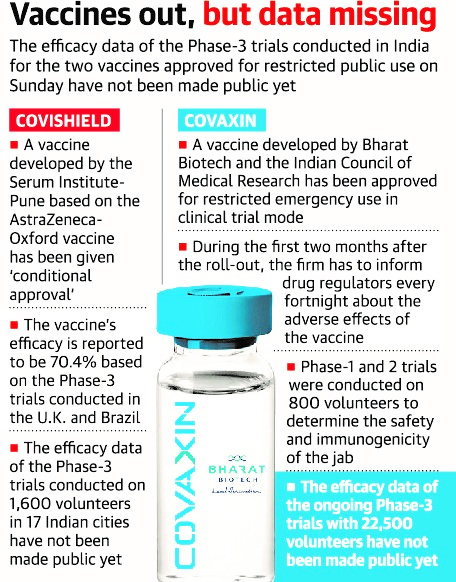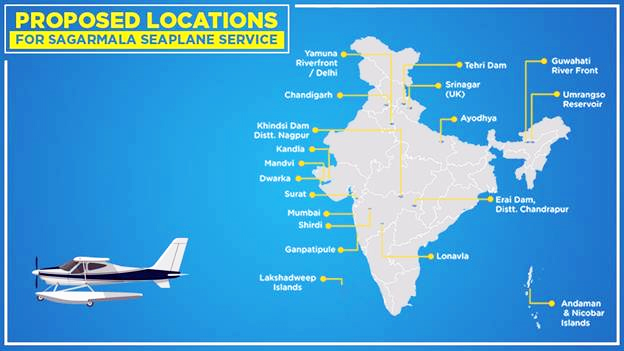Biodiversity & Environment
State of the Climate Report 2020: IMD
Why in News
According to the India Meteorological Department (IMD)’s State of the Climate Report, the year 2020 was the eighth warmest since India started keeping records in 1901.
- The State of the Climate Report looks at temperature and rainfall trends annually.
Key Points
- Eighth Warmest Year 2020:
- Average Temperature:
- During the year, the annual average temperature in the country was 0.29 degree Celsius (°C) above normal (29-year average from 1981-2010).
- However, it was much lower than 2016 (+0.71 degrees Celsius), which remains the warmest ever year the country has recorded since 1901.
- Such temperature trends were reported despite the cooling effect of La Nina, a global weather pattern that prevailed in 2020 and is linked to substantially below normal temperatures in winter.
- La Nina typically has a cooling effect on global temperatures, but this is now offset by global warming due to greenhouse gas emissions.
- As a result, La Nina years now are warmer than years with El Niño events of the past.
- El Nino and La Nina are the extreme phases of the El Niño and the Southern Oscillation (ENSO) cycle.
- ENSO is a periodic fluctuation in sea surface temperature and the air pressure of the overlying atmosphere across the equatorial Pacific Ocean. It has a major influence on weather and climate patterns such as heavy rains, floods and drought.
- El Niño has a warming influence on global temperatures, whilst La Nina has the opposite effect.
- Comparison to Global Average Temperature:
- India's nearly 0.3 degree rise was less than the average global temperature rise of 1.2 degree (January to October, as per the World Meteorological Organisation’s State of the Global Climate).
- Average Temperature:
- Warmest Years over India:
- The eight warmest years on record in order were: 2016 (+ 0.71 degree C) > 2009 (+0.55 degree C) > 2017 (+0.541 degree C)> 2010 (+0.539 degrees C) > 2015 (+0.42 degree C)> 2018 (+0.41 degree C)> 2019 (+0.36 degree C)> 2020 (+0.29 degree C).
- The past decade (2011-2020) was the warmest on record.
- Extreme Weather Events:
- Extremely heavy rain, floods, cold waves and thunderstorms led to significant loss of lives and properties.
- According to the report “Preparing India for Extreme Climate Events” released by the Council on Energy, Environment and Water (CEEW), over 75% of districts in India are hotspots of extreme climate events.
- Uttar Pradesh and Bihar reported the highest casualties due to cold waves, lightning and thunder last year.
- Extremely heavy rain, floods, cold waves and thunderstorms led to significant loss of lives and properties.
- Data on Tropical Storms:
- Globally, the Atlantic Ocean experienced one of the most active years, with over 30 tropical storms originating here.
- The Indian Ocean region - the Arabian Sea and the Bay of Bengal, together reported five cyclones - Amphan, Nisarga, Gati, Nivar and Burevi.
- Of these, Nisarga & Gati formed over Arabian Sea, while the remaining 3 cyclones formed over the Bay of Bengal.
- Data on Rainfall:
- The annual rainfall over the country in 2020 was 109% of the Long Period Average (LPA) calculated for the period of 1961-2010.
India Meteorological Department
- IMD was established in 1875.
- It is an agency of the Ministry of Earth Sciences of the Government of India.
- It is the principal agency responsible for meteorological observations, weather forecasting and seismology.
International Relations
Iran Steps Up Uranium Enrichment
Why in News
Recently, Iran has resumed enriching uranium up to 20% in violation of the 2015 nuclear deal and also seized a South Korean-flagged tanker near the crucial Strait of Hormuz.
- Meanwhile, the USA has decided to keep nuclear powered aircraft carrier Nimitz in the Gulf region in the wake of threats from Iran.
Key Points
- Uranium Enrichment:
- Natural uranium consists of two different isotopes - nearly 99% U-238 and only around 0.7% of U-235.
- U-235 is a fissile material that can sustain a chain reaction in a nuclear reactor.
- Enrichment process increases the proportion of U-235 through the process of isotope separation (U-238 is separated from U-235).
- For nuclear weapons, enrichment is required upto 90% or more which is known as Highly Enriched Uranium/weapons-grade uranium.
- For nuclear reactors, enrichment is required upto 3-4% which is known as Low Enriched Uranium/reactor-grade uranium.
- Natural uranium consists of two different isotopes - nearly 99% U-238 and only around 0.7% of U-235.
- 2015 Nuclear Deal:
- In 2015, Iran with the P5+1 group of world powers - the USA, UK, France, China, Russia, and Germany agreed on a long-term deal on its nuclear programme.
- The deal was named as Joint Comprehensive Plan of Action (JCPOA) and in common parlance as Iran Nuclear Deal.
- Under the deal, Iran agreed to curb its nuclear activity in return for the lifting of sanctions and access to global trade.
- The agreement allowed Iran to accumulate small amounts of uranium for research but it banned the enrichment of uranium, which is used to make reactor fuel and nuclear weapons.
- Iran was also required to redesign a heavy-water reactor being built, whose spent fuel would contain plutonium suitable for a bomb and to allow international inspections.
- In May 2018, the USA abandoned the deal criticising it as flawed and reinstated and tightened its sanctions.
- Since sanctions were tightened, Iran has been steadily breaking some of its commitments to pressure the remaining signatories to find a way to provide sanctions relief.
- In 2015, Iran with the P5+1 group of world powers - the USA, UK, France, China, Russia, and Germany agreed on a long-term deal on its nuclear programme.
- Issues Involved:
- The dual incidents come amid heightened tensions between Iran and the USA.
- Enrichment could shorten Iran's time it would take to develop a nuclear bomb.
- Israel criticised Iran’s enrichment decision.
- Iran’s decision to begin enriching to 20% purity a decade ago nearly triggered an Israeli strike targeting its nuclear facilities, tensions that only abated with the 2015 nuclear deal.
- A resumption of 20% enrichment (at fordow facility) could see that brinkmanship return as that level of purity is only a technical step away from weapons grade levels of 90%.
- Brinkmanship is the art or practice of pursuing a dangerous policy to the limits of safety before stopping, especially in politics.
- Previously the International Atomic Energy Agency (IAEA) expressed serious concerns over Iran's blocking of inspections of two suspect locations of Uranium enrichment for more than four months.
Strait of Hormuz
- Geographic Location:
- It is the waterway separating Iran and Oman, linking the Persian Gulf to the Gulf of Oman and the Arabian Sea.
- On the north coast lies Iran, and on the south are the UAE and Musandam, an enclave of Oman.
- The Strait is 21 miles wide at its narrowest point, but the shipping lane is just two miles wide in either direction.
- Importance:
- The Strait of Hormuz is one of the world’s most strategically important choke points.
- Two-thirds of the oil and half the Liquefied Natural Gas (LNG) Indian imports come through the strait between Iran and Oman.
- As much as 18 million barrels of oil pass through the Strait of Hormuz every day, accounting for one-third of the global oil trade.
- A third of the world’s LNG trade also passes through the strait.
- Issues in the Strait:
- The strait of Hormuz plays a vital geopolitical role to the point where the US Fifth Fleet guards this strait.
- During the recent years, Iran has threatened the safe passage of oil tankers in this strait.
Way Forward
- All countries part of the 2015 deal should engage constructively and resolve all issues peacefully and through dialogue.
- Both the USA and Iran must act with strategic restraint as any crisis in West Asia will not only affect the region as a whole but will have a detrimental impact on global affairs as well.
Science & Technology
COVISHIELD and COVAXIN Approved for Restricted Use
Why in News
Recently, the Drugs Controller General of India’s (DCGI) approved COVISHIELD and COVAXIN vaccines for restricted use against Covid-19 in the country.
- COVISHIELD, COVAXIN and BNT162b2 applied to the Central Drug Standard Control Organisation (CDSCO), seeking emergency use approval.
Key Points
- Type of Approval:
- Both vaccines have received a restricted use approval in an emergency situation.
- This means the vaccines have been approved for use despite the companies not having completed clinical trials.
- This approval is, however, subject to regular submission of safety, efficacy and immunogenicity data from their ongoing trials.
- The immunogenicity of a vaccine is its ability to prompt an immune response.
- The efficacy, in this case, is a measure of its ability to bring down the number of symptomatic Covid-19 cases.
- Reason for the Emergency Approval:
- Given the pandemic, the government wanted a vaccine ready to use at the earliest.
- Another growing concern is the mutation of the SARS-CoV-2 virus in countries like the UK which are now starting to spread to other parts of the world, including India.
- COVISHIELD: It is the name given to an Oxford-AstraZeneca Covid-19 vaccine candidate which is technically referred to as AZD1222 or ChAdOx 1 nCoV19.
- Produced By:
- It is a version of the vaccine developed by the University of Oxford in collaboration with Swedish-British drugmaker AstraZeneca.
- Serum Institute of India (SII) is the manufacturing partner in India.
- Constituents and Action:
- It is based on a weakened version of a common cold virus or the adenovirus that is found in chimpanzees.
- This viral vector contains the genetic material of the SARS-CoV-2 spike protein (protrusions) present on the outer surface of the virus that help it bind with the human cell.
- The body’s immune system is supposed to recognise this protein as a threat, and work on building antibodies against it.
- Significance:
- It had triggered an immune response in humans against the novel coronavirus in early trials and is considered to be one of the global frontrunners for the Covid-19 vaccine.
- Produced By:
- COVAXIN: It is India’s only indigenous Covid-19 vaccine.
- Produced By:
- Developed by Bharat Biotech, Hyderabad in collaboration with the Indian Council of Medical Research’s National Institute of Virology, Pune
- Constituents and Action:
- It is an inactivated vaccine which is developed by inactivating (killing) the live microorganisms that cause the disease.
- This destroys the ability of the pathogen to replicate, but keeps it intact so that the immune system can still recognise it and produce an immune response.
- It is expected to target more than just the spike protein.
- It also aims to develop an immune response to the nucleocapsid protein (the shell of the virus that encloses its genetic material).
- Significance:
- COVAXIN is more likely to work against newer variants of the virus, including the UK variant, as it contains immunogens (epitopes) from other genes in addition to those from Spike protein.
- Immunogen is a stimulus that produces a humoral or cell-mediated immune response, whereas antigens are any substance that binds specifically to an antibody.
- All immunogens are antigens, but all antigens may not be immunogens.
- Approval of COVAXIN ensures India has an additional vaccine shield especially against potential mutant strains in a dynamic pandemic situation.
- COVAXIN is more likely to work against newer variants of the virus, including the UK variant, as it contains immunogens (epitopes) from other genes in addition to those from Spike protein.
- Produced By:
Science & Technology
National Metrology Conclave 2021
Why in News
Recently, the Prime Minister has inaugurated the National Metrology Conclave 2021 and also laid the foundation stone of National Environmental Standards Laboratory through a video conference.
- The Conclave was organised by Council of Scientific and Industrial Research-National Physical Laboratory (CSIR-NPL), New Delhi, on its 75th year of inception.
- National Atomic Time Scale and Bharatiya Nirdeshak Dravya Pranali were dedicated to the nation on the occasion.
- Metrology is defined by the International Bureau of Weights and Measures (BIPM) as "the science of measurement, embracing both experimental and theoretical determinations at any level of uncertainty in any field of science and technology".
Key Points
- National Atomic Time Scale:
- The National Atomic Time Scale generates Indian Standard Time with an accuracy of 2.8 nanoseconds.
- The longitude of 82°30' E has been selected as the ‘standard meridian’ of India against which the Indian Standard Time is set.
- Now Indian Standard Time is matching the International Standard Time with the accuracy range of less than 3 nanoseconds.
- CSIR-NPL is the National Measurement Institute of India and authorized (by an act of Parliament) to realize and maintain the Indian Standard Time (IST).
- IST is realized at CSIR-NPL through the National Primary Time Scale consisting of a bank of ultra-stable atomic clocks.
- CSIR-NPL is on a mission to synchronize all the clocks in the nation to IST for securing digital infrastructure and reducing cyber crime.
- CSIR-NPL is strengthening the national timing infrastructure of India, where a very rough estimate shows an economic impact of more than 10% of GDP.
- Benefits:
- This will be a big help for organizations like Indian Space Research Organisation who are working with cutting edge technology. Banking, railways, defense, health, telecom, weather forecast, disaster management , Industry4.0 and many similar sectors will be benefited greatly from this achievement.
- The National Atomic Time Scale generates Indian Standard Time with an accuracy of 2.8 nanoseconds.
- Bhartiya Nirdeshak Dravya Pranali (BND):
- These are Indian reference materials developed by CSIR-NPL. It is committed to ensure the quality of products in every manufacturing and consumer sector by providing SI traceable measurements and enhancing quality life of citizens through metrology.
- SI system is used to describe units of measurement in the International System (from French ‘Système International’).
- Reference materials (RM) play a pivotal role in maintaining the quality infrastructure of any economy through testing and calibration with precise measurements traceable to SI units. NPLI has recently released two very important certified RMs as Bharatiya Nirdeshak Dravyas (BNDs) for purity of gold and for Bituminous coal.
- Recently, the Govt of India (GoI) has supported NPLI to strengthen its BND program by developing BNDs in the area of AYUSH, Materials, Nanotechnology, Medicine, Food & Agriculture and Biologics.
- The availability of SI traceable BNDs are poised to boost the “Make in India” program and harmonize the quality infrastructure of the country.
- These are Indian reference materials developed by CSIR-NPL. It is committed to ensure the quality of products in every manufacturing and consumer sector by providing SI traceable measurements and enhancing quality life of citizens through metrology.
Governance
Sagarmala Seaplane Services
Why in News
The Ministry of Ports, Shipping and Waterways is starting the ambitious Project of Sagarmala Seaplane Services (SSPS) with potential airline operators.
- A seaplane is a fixed-wing aeroplane designed for taking off and landing on water.
Key Points
- Mechanism:
- The project is being initiated under a Special Purpose Vehicle (SPV) framework through prospective airline operators.
- SPV is a legal object formed for a specifically-defined singular purpose.
- Project Implementation:
- The project execution and implementation would be through Sagarmala Development Company Ltd (SDCL), which is under the administrative control of the Ministry of Ports, Shipping and Waterways.
- Airline operators will be invited to form a SPV with SDCL.
- The routes may be operated under the government’s subsidised ude desh ka aam nagrik (UDAN) scheme.
- Location: Several destinations are envisaged for seaplane operations:
- Benefits and Significance:
- The seaplanes services will be a game-changer providing a supplementary means of faster and comfortable transportation across the nation.
- Apart from providing air connectivity to various remote religious/tourist places, it will boost tourism for domestic and international holiday makers.
- It will save travel time and stimulate localized short distance travelling especially in the hilly regions or across the rivers/lakes etc.
- It will provide infrastructure enhancements at the places of operations.
- It will generate employment opportunities.
- Previous Project:
- One such Seaplane Service is already in operation between Kevadia and Sabarmati Riverfront in Ahmedabad which was inaugurated in October 2020.
- The Sagarmala Programme was approved by the Union Cabinet in 2015 which aims at holistic port infrastructure development along the 7,516-km long coastline through modernisation, mechanisation and computerisation.
- Under this port-led development framework, the government hopes to increase its cargo traffic three-fold.
- It also includes the establishment of rail/road linkages with the port terminals, thus providing last-mile connectivity to ports; development of linkages with new regions, enhanced multi-modal connectivity including rail, inland water, coastal and road services.
Governance
School Bag Policy 2020
Why in News
The Directorate of Education has issued a circular asking schools to follow the new ‘School Bag Policy, 2020’ released by the National Council of Educational Research and Training (NCERT).
Key Points
- The Circular:
- School teachers should inform the students in advance about the books and notebooks to be brought to school on a particular day and frequently check their bags to ensure that they are not carrying unnecessary material.
- It is the duty and the responsibility of the school management to provide quality potable water in sufficient quantities to all the students in the school so that they do not need to carry water bottles from their homes.
- About the School Bag Policy 2020:
- It lays down the guidelines on homework and weight of school bags for classes I to XII.
- School bags should not be more than 10% of the bodyweight of students across classes I to X and there should be no bags in pre-primary students.
- It recommends no homework up to class II and a maximum of two hours per week for classes III to V, one hour a day for classes VI to VIII and two hours a day for classes IX and above.
- The Policy will also require schools to introduce infrastructural changes as students will not be able to carry many books daily.
- The schools need to provide lockers right from preschool to senior secondary to enable children to leave books in school and carry home only what is required.
- It adds that the teachers should take the responsibility of checking the weight of school bags of the students every three months on a day selected for the whole class and any information about heavy bags should be communicated to the parents.
- It adds that files and thin/light exercise books should be preferred to thick/heavy ones.
- It lays down the guidelines on homework and weight of school bags for classes I to XII.
- Problems of heavy school bags:
- The heavy school bag has severe/adverse physical effects on growing children which can cause damage to their vertebral column and knees.
- A heavy backpack can pull on the neck muscles contributing to headache, shoulder pain, lower back pain and neck and arm pain.
- The posture of the body also gets affected to a great extent which in the long term develops imbalances in the body and affects the health of the nervous system.
NCERT
- It is an autonomous organization under the Ministry of Education (MoE) which is responsible for:
- Ensuring qualitative improvement in school education by undertaking and promoting research in areas related to school education.
- Prepare and publish model textbooks, supplementary material.
- Develop and disseminate innovative educational techniques and practices.
- Act as a nodal agency for achieving the goals of Universalization of Elementary Education.
Governance
Prevention of Cruelty to Animals Act, 1960
Why in News
The Supreme Court (SC) has asked the Centre to either withdraw or amend rules notified in 2017 for confiscating animals of traders and transporters during the pendency of trial in cases under the Prevention of Cruelty to Animals Act, 1960.
Key Points
- About the 2017 Rules:
- The Prevention of Cruelty to Animals (Care and Maintenance of Case Property Animals) Rules, 2017 have been framed under the Prevention of Cruelty to Animals Act, 1960.
- The Rules allow a Magistrate to forfeit the cattle of an owner facing trial under the Act.
- The animals are then sent to infirmaries, animal shelters, etc.
- The authorities can further give such animals for “adoption”.
- SC’s Observations:
- The Rules are plainly contrary to Section 29 of Prevention of Cruelty to Animals Act, under which only a person convicted of cruelty can lose his animal.
- It asked the government to either change the rule or face a stay from the court.
- About the Prevention of Cruelty to Animals Act, 1960:
- The legislative intent of the Act is to “prevent the infliction of unnecessary pain or suffering on animals”.
- The Animal Welfare Board of India (AWBI) was established in 1962 under Section 4 of the Act.
- This Act provides for punishment for causing unnecessary cruelty and suffering to animals. The Act defines animals and different forms of animals.
- Discusses different forms of cruelty, exceptions, and killing of a suffering animal in case any cruelty has been committed against it, so as to relieve it from further suffering.
- Provides the guidelines relating to experimentation on animals for scientific purposes.
- The Act enshrines the provisions relating to the exhibition of the performing animals, and offences committed against the performing animals.
- This Act provides for the limitation period of 3 months beyond which no prosecution shall lie for any offences under this Act.
Important Facts For Prelims
Indian Pangolin
Why in News
Recently, the Odisha Forest department has stressed the need for stricter monitoring of social media platforms to check pangolin poaching and trading.
Key Points
- About:
- Pangolins are scaly anteater mammals and they have large, protective keratin scales covering their skin. They are the only known mammals with this feature.
- Diet:
- Insectivore- Pangolins are nocturnal, and their diet consists of mainly ants and termites, which they capture using their long tongues.
- Types:
- Out of the eight species of pangolin, the Indian Pangolin (Manis crassicaudata) and the Chinese Pangolin (Manis pentadactyla) are found in India.
- Difference:
- Indian Pangolin is a large anteater covered by 11-13 rows of scales on the back.
- A terminal scale is also present on the lower side of the tail of the Indian Pangolin, which is absent in the Chinese Pangolin.
- Habitat:
- Indian Pangolin:
- It is widely distributed in India, except the arid region, high Himalayas and the North-East.
- The species is also found in Bangladesh, Pakistan, Nepal and Sri Lanka.
- Chinese Pangolin:
- It is found in the Himalayan foothills in Eastern Nepal, Bhutan, Northern India, North-East Bangladesh and through Southern China.
- Indian Pangolin:
- Threats to Pangolins in India:
- Hunting and poaching for local consumptive use (e.g. as a protein source and traditional medicine) and international trade for its meat and scales in East and South East Asian countries, particularly China and Vietnam.
- They are believed to be the world’s most trafficked mammal.
- Conservation Status:
- Wildlife Protection Act, 1972: Schedule I
- IUCN Red List: Endangered
- CITES: Appendix I







